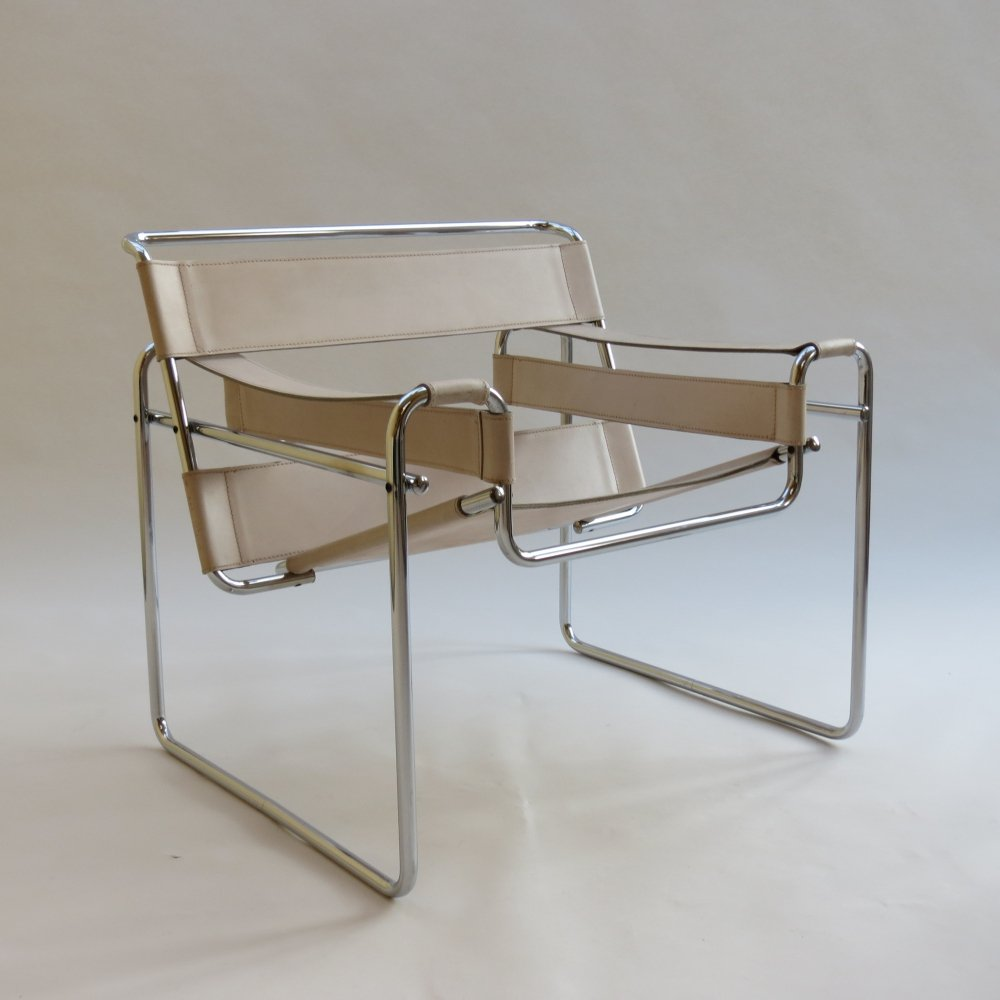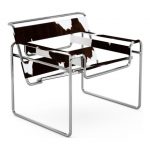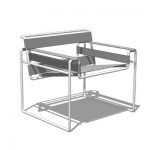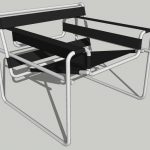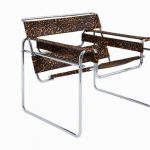The chair model B3, commonly known as the Wassily chair, is arguably one of the most famous designs by Marcel Breuer – the legendary modernist and an icon of architecture and design of the 20th century who abandoned the idea of ??decorative, bourgeois forms in favor of elegant Simplicity. Breuer was still an apprentice at the Bauhaus when he designed the chair model B3, which would change the world of furniture forever.
story
The origins of the Wassily chair can be traced back to the beginning of the modern movement. Contrary to the historical trend of incorporating the past into furniture design, this era was defined by the idea of ??creating timeless, universal objects that withstand the passage of time. This belief led to simpler, cleaner designs that were less likely to become obsolete. The concept of the simplified design was later developed by the Bauhaus, with which Breuer was closely associated. The main principle of the Bauhaus was to make everyday mass products beautiful and yet practical and still make them accessible to ordinary people. Breuer’s commitment to this famous German art school began at the age of 18. He was one of the first and youngest students in the school’s history. His talent was quickly recognized and soon afterwards he became head of the carpentry shop, where he conceived a variety of iconic furniture designs.
The chair model B3 was first presented in 1925. Its unusual shape was enthusiastically received by the Bauhaus and only one year later the entire facility was equipped with this modernist furniture. The chair went into mass production in the late 1920s and was originally manufactured by Thonet, the German-Austrian furniture company best known for its curved wooden chair designs, under the name “Model B3”. Production stopped in World War II. After the war years, Gavina, the Italian furniture company, accepted the license for the chair and named it after the non-objective painter and a colleague of Breuer at the Bauhaus, Wassily Kadinsky. The Wassily Chair is currently available under the Knoll brand.
design
The Wassily Chair is undoubtedly one of the symbols of modernism in the 20th century and will set a new standard in furniture design in the coming decades. The design has been reduced to the essentials, which makes the shape of the chair very minimalist and pure. The chair is said to be the first curved tubular steel furniture design. Its distinctive frame was inspired by the curvy handlebars of the Adler bicycle. The story behind the chair design was revealed by Breuer in an interview with a Knoll historian, where he said: “I was pretty idealistic at the time, 23 years old. I made friends with a young architect and bought my first bike. I learned to ride a bike and talked to this young man and told him that the bike seems to be a perfect production because it hasn’t changed in the last twenty or thirty years. It’s still the original bike shape. He said, “Have you ever seen them make these parts? How do you bend this handlebar? They’d be interested because they bend those steel tubes like macaroni. ‘That kind of stuck in my mind and I started thinking about steel tubes bent into frames – probably this is the material you could use for an elastic and transparent chair. Usually I was very busy with the transparency of the form. This is how the first chair was made … I realized the bending had to go further. It should only be bent without welding points so that it can also be chrome-plated and put together in parts. So the first Wassily was born. “
Indeed, the shape of the Wassily chair is known for its transparency. This is due to the characteristic chrome-plated frame made of curved steel tubes that are connected with screws. Thick leather loops made of cowhide, which are stretched over the frame, form the seat of the chair, which can maintain its crisp tension for decades. Customers can choose between three types of leather: Spinneybeck® Belting Leather in 27 colors with matching colored edges; white, beige and light brown Spinneybeck® thick cowhide and 8 options from Spinneybeck® Haired Hide.
Every Wassily chair has the KnollStudio logo and the signature of the designer engraved on the base.
The overall look of the chair is extremely appealing and stylish. It’s very proportional and balanced, and the use of the frame makes it look both airy and light. Unlike fully upholstered furniture, it does not obstruct the room in which it is placed, but improves the perception of spaciousness. Even today, almost nine decades after its presentation, when modernity is no longer an extravagant or radical concept, the Wassily chair has neither aged nor become banal. It still looks fresh and contemporary.
 decorafit.com Design ideas for your home and patio
decorafit.com Design ideas for your home and patio
